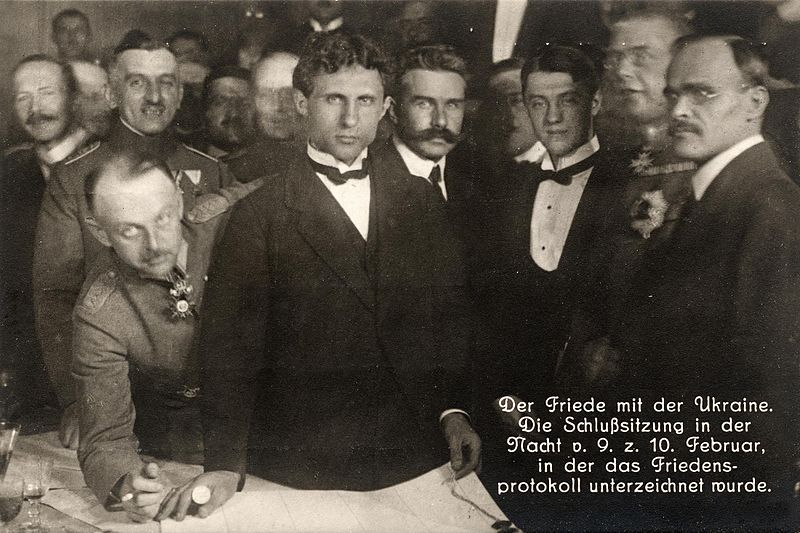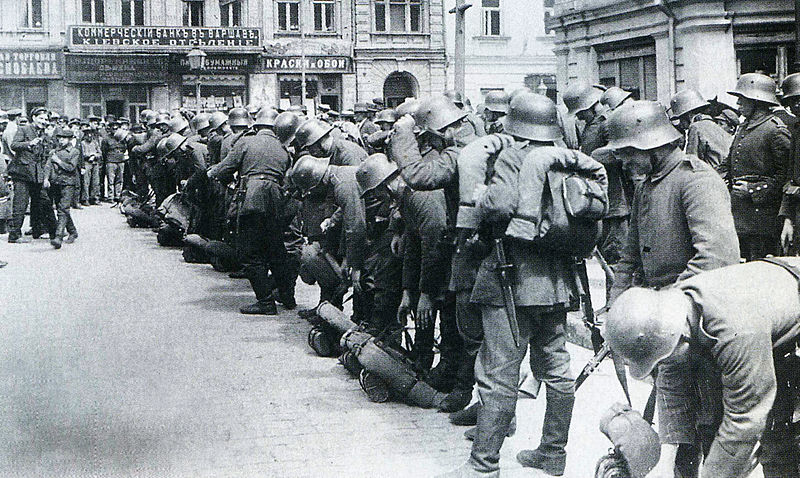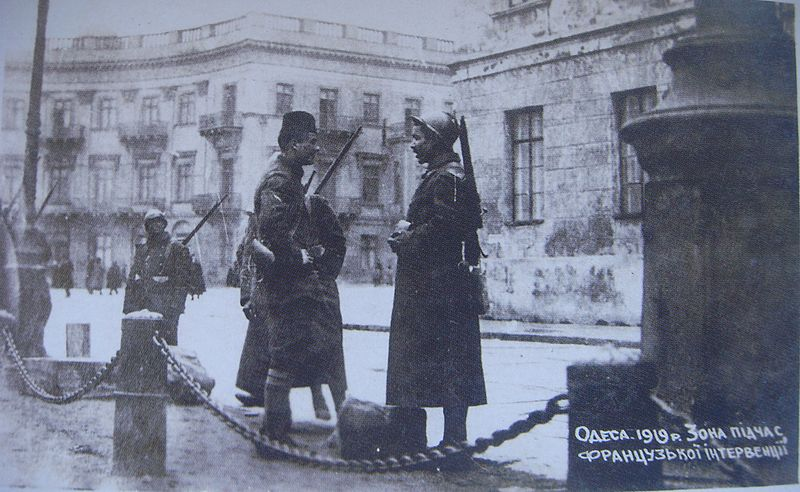Previous Subchapter → 1.0 History - Leftovers from dead countries
Russia was essentially the only Allied country fighting on the war’s Eastern Front and it wasn’t going well for them, the Russian troops found themselves in a stalemate with the Central Powers, Russia’s economy was essentially dead and the Russian population were starving, growing tired of sacrificing their lives for a conflict they didn’t feel was worthwhile, rebellion mounted against the Empire.
In March 1917 the Russian Empire was overthrown by the February Revolution, with the aftermath being a situation known as “Dual Power”, where control over Russia was split between a new Provisional Government and the Soviets, a set of militant Communist run worker’s councils spread across the country, it was in this chaos that modern Ukraine first emerged.
In response to the political crisis in the rest of Russia a Ukrainian political group known as the Central Rada of Ukraine was founded and declared the “Ukrainian People’s Republic”, an autonomous part of Russia with its own identity, the legitimacy of the UPR was eventually recognised by the Provisional Russian government, which later reorganised itself as the Russian Republic.
But in November 1917 Russia was plunged into disorder again by the October Revolution, where the Communists overthrew the Republic and declared their own government, the Russian Soviet Federative Socialist Republic, leading to a civil war between the Communists, who became known as the “Red Russians”, and the “White Russians”, Anti Communists made up of those hoping to either restore either the Russian Empire or the Russian Republic. The White Russians didn’t recognise Ukraine as a separate territory, considering it a part of “Southern Russia”, but the Reds did, and formed the Communist aligned Soviet Republic of Ukraine, a state that they eventually hoped could take over the UPR.
[Editor’s Note: The months are wrong for these event names because Russia used a different calendar to the modern one at the time (the Julian Calendar instead of the current Gregorian calendar), which is why the February Revolution was in March and the October Revolution in November]
Once again the UPR responded to the crisis, this time declaring full independence from Russia in January 1918, and in February of that year their independence was recognised by the Central Powers, who signed a treaty with the UPR known as the Treaty of Brest-Litovsk where the Ukrainians agreed to end their role in the war effort.

In March their independence was also recognised by Soviet Russia, as the Communists signed their own treaty with the Central Powers under the same name, part of the treaty was that the Russian Communists agreed to give up their claims to Russia’s former imperial territories, Ukraine included, and hand them over to the Central Powers, giving them total victory on the Eastern Front and leading to Allied reprisals across Russia and its former territories.
This resulted in most of Ukraine falling under an occupation from the Central Powers, with the Ukrainian People’s Republic being briefly abolished and replaced by a Pro-German proxy called the “Ukrainian State”. Smaller portions of Ukraine were invaded by the French led Allies in response.


But 1918 was the last year of the First World War, and all sides of the conflict were exhausted, riddled with disease and losing millions of citizens to the fighting. While the Eastern Front was a great success for the Central Powers, the Western Front was not, bringing members of the Central Powers like Austria-Hungary into disrepair.